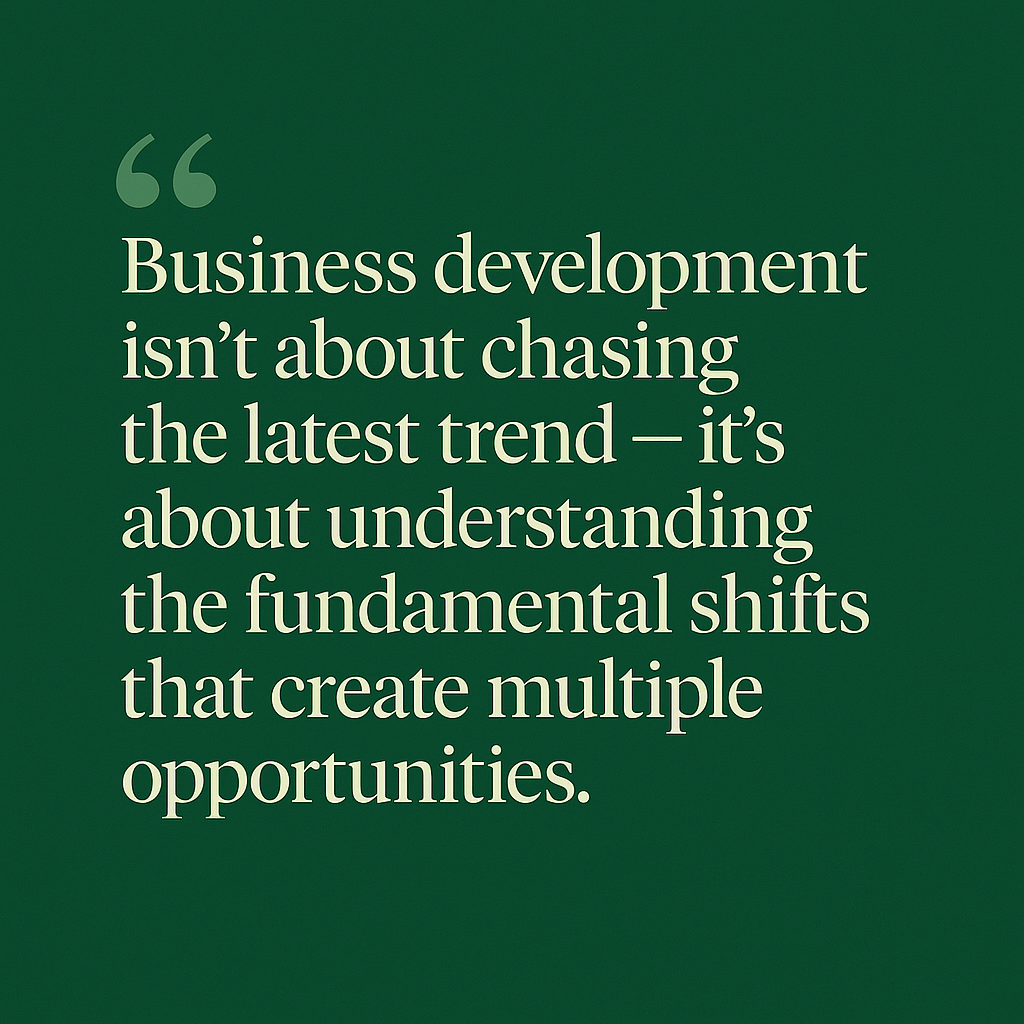This post is also available in:
Bahasa Malaysia
As small business owners, it’s easy to feel overwhelmed. Every week there seems to be a new platform, tool, or “must-do” strategy promising to skyrocket growth. Social media trends, viral apps, or buzzwords like AI and blockchain dominate the headlines.
But here’s the truth: business development isn’t about chasing the latest trend. It’s about understanding the fundamental shifts that create multiple opportunities for your business — and positioning yourself to take advantage of them.

Why Chasing Trends Doesn’t Work
Trends are short-lived. They may create noise, but they don’t always create sustainable growth.
- They change too quickly – By the time you adapt, the market may have already moved on.
- They distract from your core business – Instead of improving what you already do well, you end up spreading resources thin.
- They may not fit your customers – What’s popular in the US or Europe may not resonate with Malaysian SMEs or local consumers.
What Are Fundamental Shifts?
Fundamental shifts are the long-term changes in how businesses and customers operate. Unlike fads, they reshape the entire landscape and open doors for multiple opportunities.
Examples of fundamental shifts small business owners face today include:
- Digital transformation – More businesses moving from desktop to cloud solutions.
- Regulatory changes – Malaysia’s e-Invoicing rollout, EPF and SOCSO updates, SST expansions.
- Customer behaviour – More people expecting online convenience, mobile payments, and quick responses.
- Workforce trends – Employees valuing flexibility, remote work, and digital collaboration tools.
These are not passing fads. They are structural changes that will define how businesses operate for years.
How Small Businesses Can Respond
Instead of chasing what’s hot, focus on building strategies around these shifts.
- Look at compliance as an opportunity
- e-Invoicing may feel like extra work, but it’s also a chance to digitise your accounting, reduce manual errors, and speed up cash flow.
- Embrace the right technology
- Cloud accounting, payroll, and HR systems remove headaches like backups, version updates, and security risks — freeing up time to serve customers better.
- Pay attention to customer expectations
- Customers now expect convenience. Offering online payment options, WhatsApp communication, or same-day responses can set you apart.
- Invest in people, not just tools
- Train your staff in digital skills, compliance requirements, and customer service. Technology is useless if your team can’t use it well.
A Simple Way to Stay Grounded
Before jumping on the “next big thing,” ask yourself:
- Does this align with my customers’ real needs?
- Will this still matter in 3 years?
- Does it strengthen or distract from my business fundamentals?
If the answer is “no” to any of these, it’s probably a trend — not a shift.
In conclusion
Growing a small business is tough, especially when you’re juggling limited time, people, and resources. But the path to growth isn’t about chasing every new idea. It’s about recognising the fundamental shifts shaping the market — and taking small, steady steps to adapt.
Do this, and you’ll not only survive the noise of trends — you’ll be ready to thrive in the opportunities they leave behind.